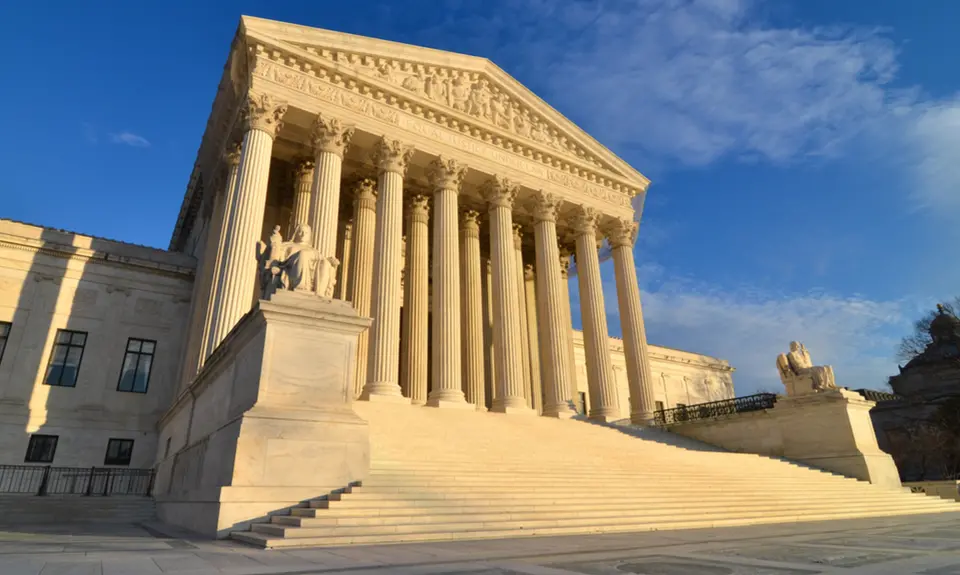Protecting the environment (Seven County Infrastructure Coalition v. Eagle County; San Francisco v. EPA)
Seven County Infrastructure Coalition v. Eagle County
The justices may weaken the requirement that federal agencies analyze the environmental impacts of their actions. Oral arguments are scheduled for December 10.
What is an “environmental impact statement?”
An “environmental impact statement,” or EIS, is a bedrock part of protecting our environment. It is required by the National Environmental Policy Act (“NEPA”), a landmark law dating back to 1970. It requires federal agencies to assess the environmental impact of their decisions before making them.
Requiring an EIS improves decisionmaking across the entire federal government. It significantly reduces the chances that a project will lead to unexpected environmental damage down the road. This can be especially important for marginalized communities whose concerns might otherwise not be taken into account when businesses seek federal approval for a project.
What did the EIS in this case involve?
A railroad company and several counties in Utah want to build an 80-mile railway to connect a basin rich in natural gas, oil, and other hydrocarbon deposits to an existing rail line. That requires the approval of a federal agency called the Surface Transportation Board. Under NEPA, approval by the Board requires an environmental impact statement.
The Board approved the project. But its EIS did not address the “downstream impact” of increased crude oil refining along the Gulf Coast. And it did not address the “upstream impact” of oil development in the basin that would occur as a result of the railroad’s approval.
Among other reasons, the Board claimed that since it lacks the regulatory power to mitigate those environmental impacts, it does not have to include them in its environmental impact statement.
After the Board made its decision, several environmental organizations and Eagle County, Colorado, sued over the limited EIS.
What happened in the lower court?
A unanimous panel of the D.C. Circuit determined that the Board’s EIS was insufficient. According to the court, it did not matter that the upstream and downstream effects were outside the Board’s regulatory authority. What mattered was that the Board’s decision would determine if those effects would occur. That’s because the Board had the exclusive authority to allow or prevent construction of the railroad.
When one of the losing parties asked the entire circuit to review the panel decision, not one of the court’s 11 judges voted to do so. Nevertheless, the Supreme Court decided to consider the appeal.
What will the impact of the Court’s ruling be?
The petitioners are asking the Supreme Court to rule that an agency never has to consider any environmental effects that it doesn’t directly regulate. That would let federal agencies ignore important environmental impacts of their actions. It would contradict a provision in NEPA specifically directing agencies to consult with other agencies that regulate in areas where there may be an environmental impact. And it could make it easier for corporate interests to get approval for projects despite the environmental damage they will likely cause.
San Francisco v. EPA
The majority may take away a tool used by the EPA to protect our water from toxic pollution. Oral arguments are scheduled for October 16.
How does the EPA limit water pollution?
Congress passed the Clean Water Act to protect our water from pollutants. It prohibits facilities from discharging pollutants into the water without a permit from the Environmental Protection Agency.
An EPA permit caps the amount of certain specified pollutants in a facility’s discharged wastewater. But sometimes, that is not enough to ensure that water quality standards will continue to be met. When that happens, the EPA has imposed more stringent limitations based not on the pollutant in the discharge, but on the quality of the water that is affected by the discharge. This case is about whether such water-quality based limitations are legal.
What are examples of water-quality based limitations?
Water quality standards protect public health and wildlife and keep places useable for recreation. Some limit the quantity of dangerous bacteria and metals in the water. Others set caps on the presence of certain dangerous chemicals in fish that would threaten human health if eaten. Still others prohibit the presence of floating particulates, grease, and oil.
What happened in this case?
This case arises in the context of a municipal sewage system. Like many cities, San Francisco has a system that delivers both sewage and stormwater to a treatment plant through a single set of pipes. This case involves the EPA’s permit for one of the city’s treatment plants. Heavy rains can push the system beyond capacity, causing overflowing sewage to be discharged into water that reaches the ocean and the shore. The EPA and California have worked together to determine the conditions the San Francisco treatment plant should meet in order to get its permit.
Among other things, the permit caps the permissible amount of certain pollutants within the discharge. It also requires that the water where the discharge goes meets certain specified water quality standards. San Francisco argues that this latter type of condition is not allowed by the Clean Water Act.
What will the effect of this case be?
The impact of the case goes far beyond municipal sewage systems. It affects the EPA’s ability to limit water pollution in any number of other contexts. Numerous powerful business interests have filed amicus briefs in support of San Francisco’s effort to limit how the EPA protects water quality.
Back to top
